
blade length 32.0cm, curvature 0.6cm, thickens at the base 7mm, width 29mm
Gassan is a famous smiths in Dewa province, from 14th century to the modern age. But in fact, good Gassan blade in Koto period is rare in market.
This wakizashi is a very good Gassan blade in Koto period. The character of this blade is quite that as every body can see it so, though it is originally unsigned. But to know the exact age is difficult, because the Gassan smiths had not changed their style over through the Koto period.
The steel layer is, of course, wave and burl pattern (Ayasugi-hada). It is clear comparing with other blades in this school, and it includes appearance of steel particles (jinie). It is the steel of Gassan in Koto period.
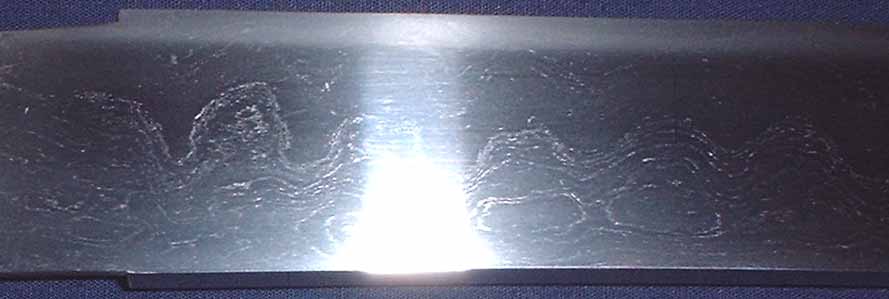
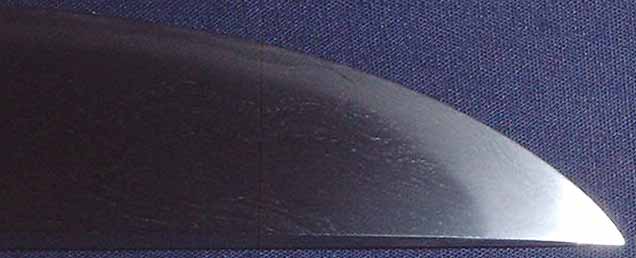

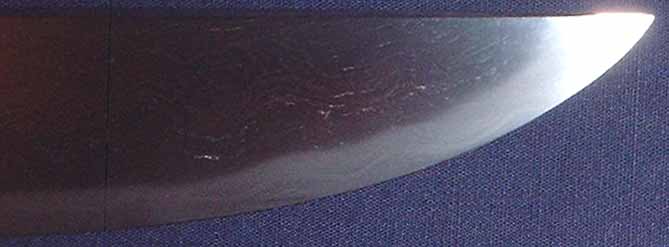
The hamon is made of mild konie (small particles), and its pattern is a wave (Notare) and Gunome according with the layer pattern.
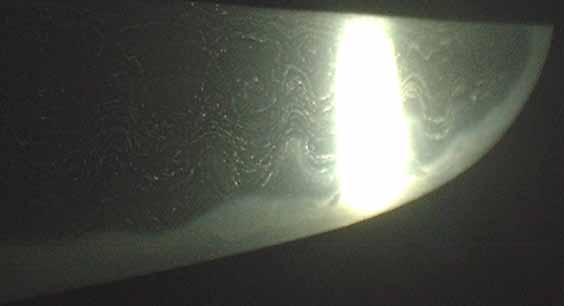
This is a very good sample to study the characters of Gassan blade in Koto period. The steel construction of this blade is the three-layer (sandwich like). The outer steel looks rough while the core is compact. Such a steel construction is common on Gassan blades in Koto period. Probably the outer one is milder than the core. To study the difference of steel particles (jinie) is interesting. The hamon does not look very hard, including much appearance relating with the layer pattern. Such appearance also common on Gassan in Koto period.
The Hadori work is an obstruction to take pictures of real hamon. But you can see the appearance clearer when you study the blade in your hand.
The tang is originally unsigned. The rust condition will illustrate the age. (=> why originally no signature on good quality blade?)

A picture to compare the layer pattern on both side.
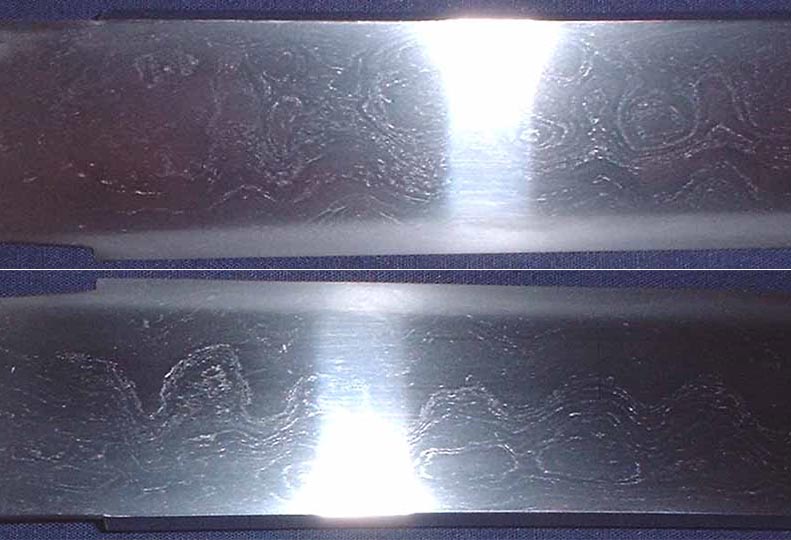
Gassan is a mountain that rises in Yamagata prefecture (Dewa province).
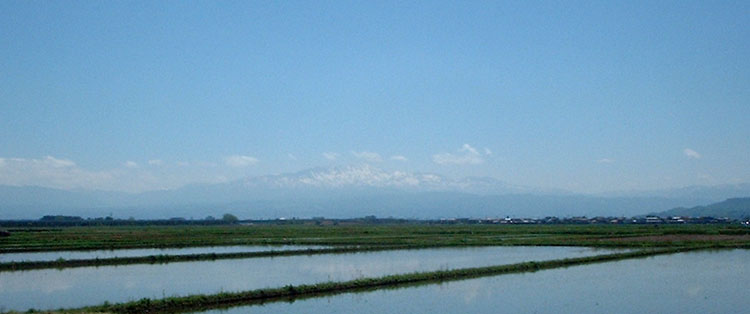
(The Mt. Gassan, view from Tsuruoka city, Yamagata prefecture.)
The sword smiths lived at the foot of the mountain, and named their blades "Gassan" after the mountain. Usually they put an inscription in the tang only "Gassan", and sometimes adding individual smith's name. The school started from Kamakura period, and ran toward nowadays.